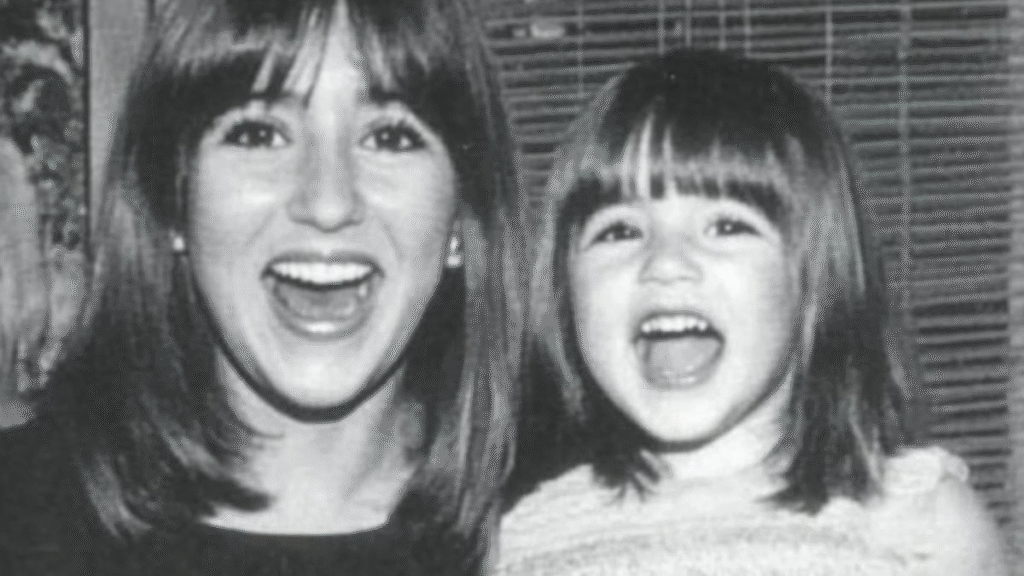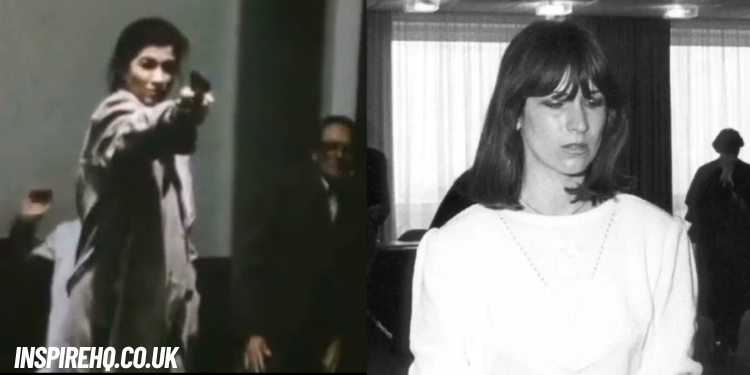The story of Marianne Bachmeier is one of the most shocking and heartbreaking cases in modern German history. In 1981, a grieving mother entered a courtroom and shot dead the man accused of murdering her young daughter. The case not only shocked the world but also raised difficult questions about justice, revenge, and how far grief can push a parent. Her life, marked by tragedy and resilience, continues to capture public attention decades later. In this article, we will explore the life of Marianne Bachmeier, her tragic loss, the shocking courtroom shooting, and the lasting impact of her story on justice and society.
Quick Bio:
| Full Name | Marianne Bachmeier |
|---|---|
| Born | June 3, 1950 – Sarstedt, West Germany |
| Died | September 17, 1996 – Lübeck, Germany |
| Age at Death | 46 years |
| Nationality | German |
| Parents | Refugees from East Prussia (names not widely known) |
| Children | Three (two given up for adoption, one daughter Anna) |
| Height | Not officially documented |
| Occupation | Worked in nightclub/pub, later hospice worker |
| Marital Status | Married (1985), divorced in 1990 |
| Notable For | Courtroom shooting of Klaus Grabowski in 1981 |
| Net Worth | Not publicly known; received approx. 100,000 DM for her story |
| Cause of Death | Pancreatic cancer |
| Burial Place | Burgtor Cemetery, Lübeck, Germany |
Early Life in Germany
Marianne Bachmeier was born on June 3, 1950, in the town of Sarstedt in Lower Saxony, West Germany. She grew up in a conservative and difficult household. Her father was strict and authoritarian, and her parents’ marriage ended in divorce when she was young. The instability at home left a lasting impression on her, shaping her into someone who often had to rely on her own strength. Her teenage years were turbulent, and she faced challenges that most young people could hardly imagine.
A Young Mother’s Struggles
Marianne became a mother for the first time at the age of sixteen, but she was too young and unprepared to raise a child, and the baby was placed for adoption. Two years later, she became pregnant again under tragic circumstances, and once more the child was given up. These early experiences were painful and life-changing. When her third daughter, Anna, was born in 1972, Marianne decided to raise her on her own. This decision marked the beginning of a deep and unbreakable bond between mother and daughter.

The Bond with Anna
Anna was the center of Marianne’s world. As a single mother, she worked hard to provide for her daughter, often holding late night jobs to make ends meet. Despite financial struggles, she devoted herself to giving Anna a loving home. Friends and acquaintances described their relationship as very close—Anna was bright, independent, and often accompanied her mother to work. Life was not always easy, but together they shared a bond built on love and resilience.
The Day That Changed Everything
On May 5, 1980, seven-year-old Anna did not go to school after a disagreement with her mother. Instead, she encountered a man named Klaus Grabowski, a known sex offender who had a long criminal past. He lured Anna into his home with promises of letting her play with his cats. What followed was every parent’s worst nightmare. Grabowski kidnapped Anna, held her captive, and eventually killed her. The murder devastated Marianne, leaving her broken and filled with a grief no words could describe.
A Troubled Offender
Grabowski was not an unknown figure to the justice system. He had a history of crimes against children and had even undergone chemical castration in the past, which he later reversed with hormone treatment. Despite his dangerous past, he was released on probation. For Marianne, learning that the man who murdered her daughter had already been given multiple chances by the justice system was unbearable. To her, it was proof that the system had failed to protect her child.

The Trial of Klaus Grabowski
In March 1981, the trial of Klaus Grabowski began in Lübeck. The courtroom was filled with media, lawyers, and families waiting for justice. Marianne attended the hearings, forced to listen to details of her daughter’s suffering. Witnesses and lawyers described Grabowski’s crimes, and every word reopened her wounds. Sitting only a few feet away from the man who took her daughter’s life was more than she could bear. Each day in court deepened her grief and frustration.
The Courtroom Shooting
On March 6, 1981, during the third day of the trial, Marianne made a decision that would forever change her life. She carried a small pistol into the courtroom. When the proceedings began, she pulled out the weapon and shot Grabowski multiple times in the back. Six of the seven bullets struck him, killing him instantly in front of the judge, lawyers, and stunned onlookers. The courtroom erupted into chaos, and Marianne was quickly taken into custody. In that single moment, she transformed from grieving mother to one of the most controversial figures in German legal history.
Public Reactions
The shooting divided public opinion. Many sympathized with her, calling her a mother who did what any parent would dream of doing if faced with the same situation. Others criticized her actions, arguing that taking the law into one’s own hands could never be justified. The debate about justice versus revenge spread across Germany and the wider world. Newspapers, television, and magazines covered the story extensively, turning Marianne into an unwilling symbol of vigilante justice.
Her Own Trial
Marianne’s own trial began not long after. At first, prosecutors sought to charge her with murder, but her defense argued that she had acted in deep emotional distress. In 1983, the court found her guilty of manslaughter and unlawful possession of a firearm. She was sentenced to six years in prison but served only three before being released on parole. For many, the sentence reflected the court’s understanding of her grief, while still sending the message that taking justice into one’s hands could not be condoned.
Life After Prison
After her release, Marianne tried to rebuild her life. She married in 1985 and later moved to Nigeria with her husband, though the marriage did not last. After their divorce, she relocated to Sicily, where she worked in a hospice caring for terminally ill patients. Away from the media spotlight, she lived a quieter life, devoting herself to helping others and processing her own painful experiences.

Her Final Years
In the 1990s, Marianne returned to Germany and shared her story in interviews and through her autobiography, which gave her a chance to explain her side of the events. In 1996, she was diagnosed with pancreatic cancer. As her health declined, she agreed to let her final months be documented, offering a rare glimpse into her reflections on her past and her daughter. On September 17, 1996, Marianne passed away at the age of 46. She was laid to rest next to her beloved daughter Anna, their graves symbolizing a bond that not even tragedy could break.
Personal Details
Marianne’s life was marked by hardship and resilience. She stood about average in height, with dark hair and expressive features that reflected her strong character. At the time of her media coverage, she was often described as a woman of quiet determination, though there are no detailed records of her physical appearance like those of modern public figures. She never enjoyed financial wealth; her reported payment from selling her story to a magazine was likely used to cover legal expenses and living costs. She had no presence on social media, as she passed away long before platforms like Facebook or Instagram existed. What defined her was not material wealth or glamour, but the intensity of her love for her daughter and the tragic events that shaped her life.
Legacy
Marianne Bachmeier’s story remains one of the most powerful examples of how grief can push a person beyond ordinary limits. Her case continues to be discussed in documentaries, films, and books. It serves as both a warning and a reflection—of how justice systems can fail, how grief can overwhelm reason, and how a mother’s love can lead to extraordinary and irreversible actions. Decades later, her name still stirs debates about morality, law, and the fine line between justice and vengeance.
Conclusion
The story of Marianne Bachmeier is more than just a courtroom shooting—it is the story of a mother’s love, her unimaginable grief, and her struggle with a justice system that she believed failed her child. Whether people see her as a hero or a criminal, her actions cannot be separated from the deep pain of losing Anna. In the end, Marianne’s life and choices remain a haunting reminder that grief can drive us to places we never thought we could go. Her story endures, not only as a shocking piece of history but also as a human tale of love, loss, and the pursuit of justice.
FAQs:
1. Who was Marianne Bachmeier?
Marianne Bachmeier was a German mother who became widely known after she shot and killed Klaus Grabowski, the man who murdered her seven-year-old daughter Anna, during his trial in 1981.
2. Why did Marianne Bachmeier shoot Klaus Grabowski?
She acted out of overwhelming grief and frustration, believing the justice system had failed her child. In a moment of desperation, she took justice into her own hands inside the courtroom.
3. What happened to Marianne Bachmeier after the shooting?
She was arrested and later convicted of manslaughter and unlawful possession of a firearm. She served about three years in prison before being released on parole.
4. How did Marianne Bachmeier spend her later years?
After prison, she remarried, lived abroad in Nigeria and Sicily, and later returned to Germany. She worked in a hospice, published a book, and spent her final years reflecting on her life before passing away from cancer in 1996.
5. Where is Marianne Bachmeier buried?
She is buried beside her daughter Anna at Burgtor Cemetery in Lübeck, Germany. Their shared grave symbolizes the eternal bond between mother and daughter.
Also Read: The Story of Prichard Colon: Triumph, Tragedy, and Resilience










